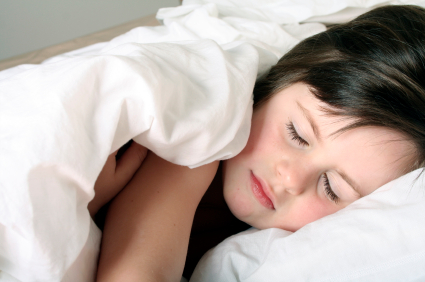The irony of a panic attack is that it comes with real physical symptoms that can fuel anxiety, especially for a teen or young person who is experiencing one for the first time.
Fortunately, there are techniques to help your child cope with an impending attack and that can eventually eliminate them altogether.
Anxiety vs. panic attack
Many people use the terms panic and anxiety interchangeably, but they are very different, says Katherine Dahlsgaard, PhD clinical director of the Anxiety Behaviors Clinic at Children’s Hospital of Philadelphia. “Panic attacks are really dramatic events in people’s lives,” she says. A panic attack comes with a sudden, intense surge of physical symptoms, says Dahlsgaard. Symptoms, which can last for 10 to 20 minutes, include:
- Heart pounding
- Sweating
- Shaky hands
- Nausea
- Shortness of breath
- Choking sensation
- Dizziness
- A fear of losing control or dying
Because the body acts as if it’s responding to an emergency when it’s inappropriate to do so, panic attacks are not only distressing, they can be very embarrassing, says Dr. Antoinette Tate, PhD, a Moorestown, NJ psychologist.
With anxiety, on the other hand, the child may be jittery and have an upset stomach or headache, says Cami R. Winkelspecht, PhD, clinical director of pediatric behavioral health at Nemours/Alfred I. duPont Hospital for Children in Wilmington, DE, but they do not come with the focused intensity of a panic attack. During an anxiety attack, a child might feel like he needs to leave the room, but he does not experience the physical symptoms of a panic attack.
Age is another way to disntinquish a panic attack from anxiety. Panic attacks are unusual in very young kids, says Tate, and aren’t usually seen until teen or late adolescence. However, anxiety can be seen in even preverbal kids.
Because panic attacks often come on suddenly and the symptoms are so physical, many kids end up in the emergency room, says Winklespecht. However, there is no test to verify a panic attack, so it’s good to pursue a medical diagnosis to be sure.
First, rule out other conditions that could mimic anxiety, says Tate. Those conditions include cardiac problems, thyroid disease, diabetes and even sleep disorders.
Treatment for panic attacks
Once more serious medical conditions are ruled out, the good news is that panic attacks are not dangerous, says Dahlsgaard. “Anxiety itself isn’t problematic It’s how someone copes with it.”
Panic disorder is highly treatable but the aim isn’t to prevent attacks, says Dahlsgaard, though that is often a benefit of treatment. “The goal is to tolerate panic attacks when they come.” Through treatment such as cognitive behavioral therapy, teens can recognize the cues that trigger panic attacks and talk themselves through it.
Depending on the severity, medication is sometimes recommended, says Tate. The medication is intended to bring the anxiety down a notch, but once the patient has had practice with coping methods, medication might not be necessary.
Dahlsgaard recommends finding a therapist who specializes in interoceptive exposure therapy, which exposes the patient to situations that get them used to feeling hot, dizzy, or having an elevated heart rate.
Exercise can also be used to mimic some of the same symptoms
“I frequently prescribe exercise,” says Dahlsgaard. When you exercise, your heart races, you feel hot, you feel uncomfortable, sensations similar to a panic attack, except that exercise is a productive way to feel that way.
“Temporary physical discomfort is not dangerous most of the time,” she says. This helps kids learn to interpret the physical discomfort in a way that doesn’t assume a negative outcome.
Coping techniques
For younger kids with anxiety, play I Spy, suggests Tate. In a heightened moment of fight-or-flight mode, naming the things we see around us engages the more advanced part of our brains, she says.
Diaphragmatic breathing or belly breathing is another go-to technique. “Calming your breathing cycle down calms the physiologic response,” says Winklespecht.
Suzanne Koup-Larsen is a contributing writer to MetroKids.






